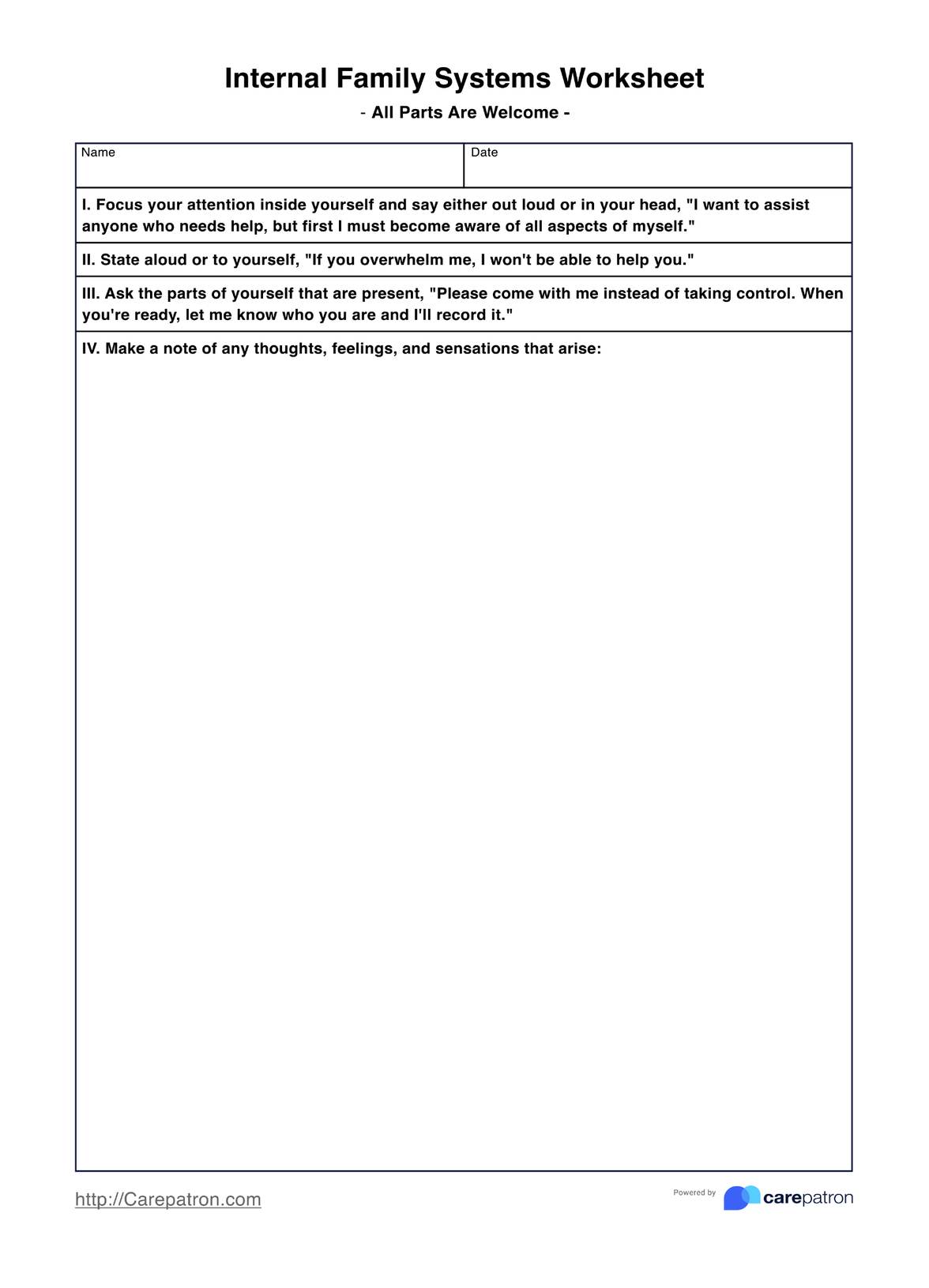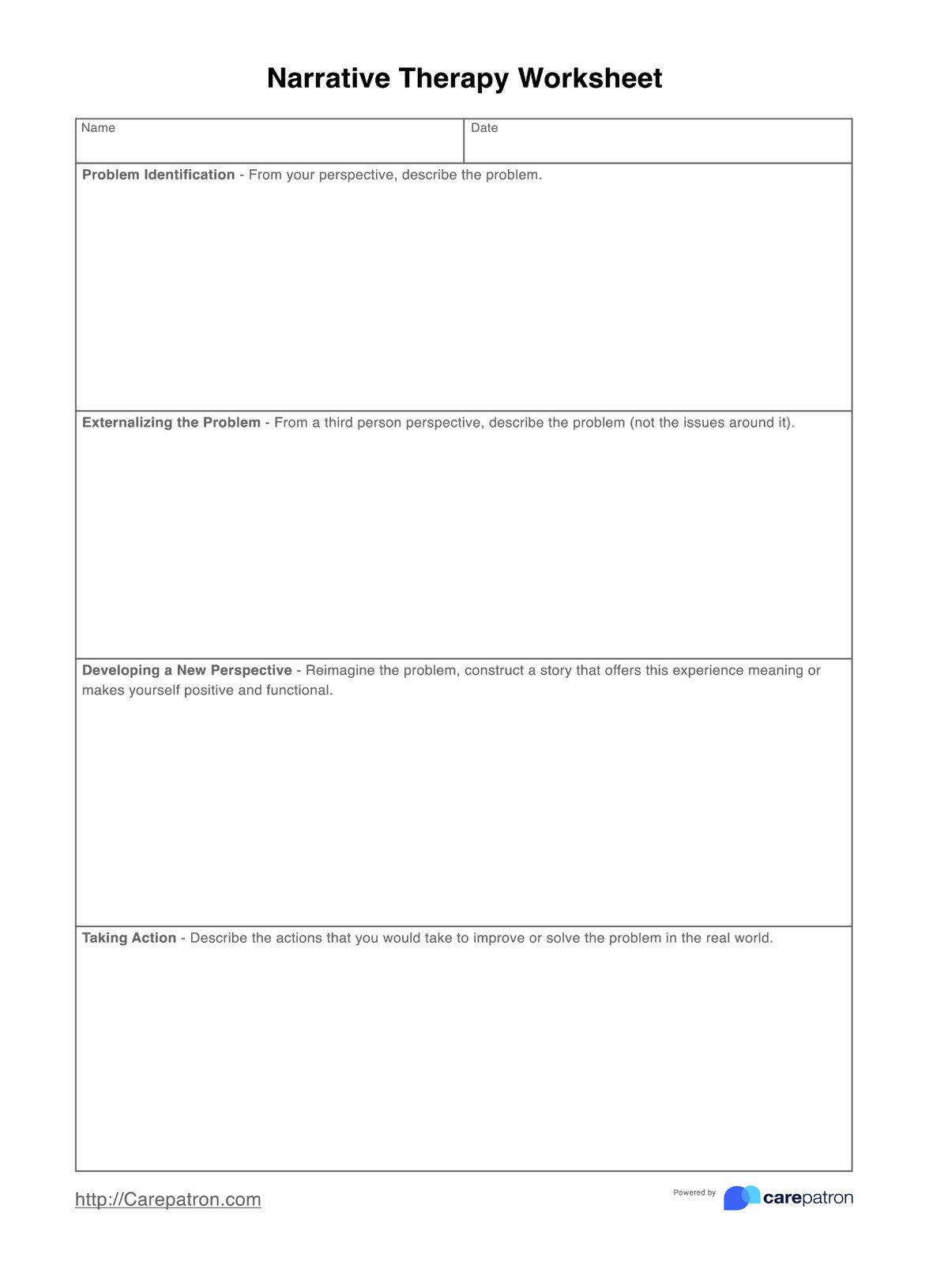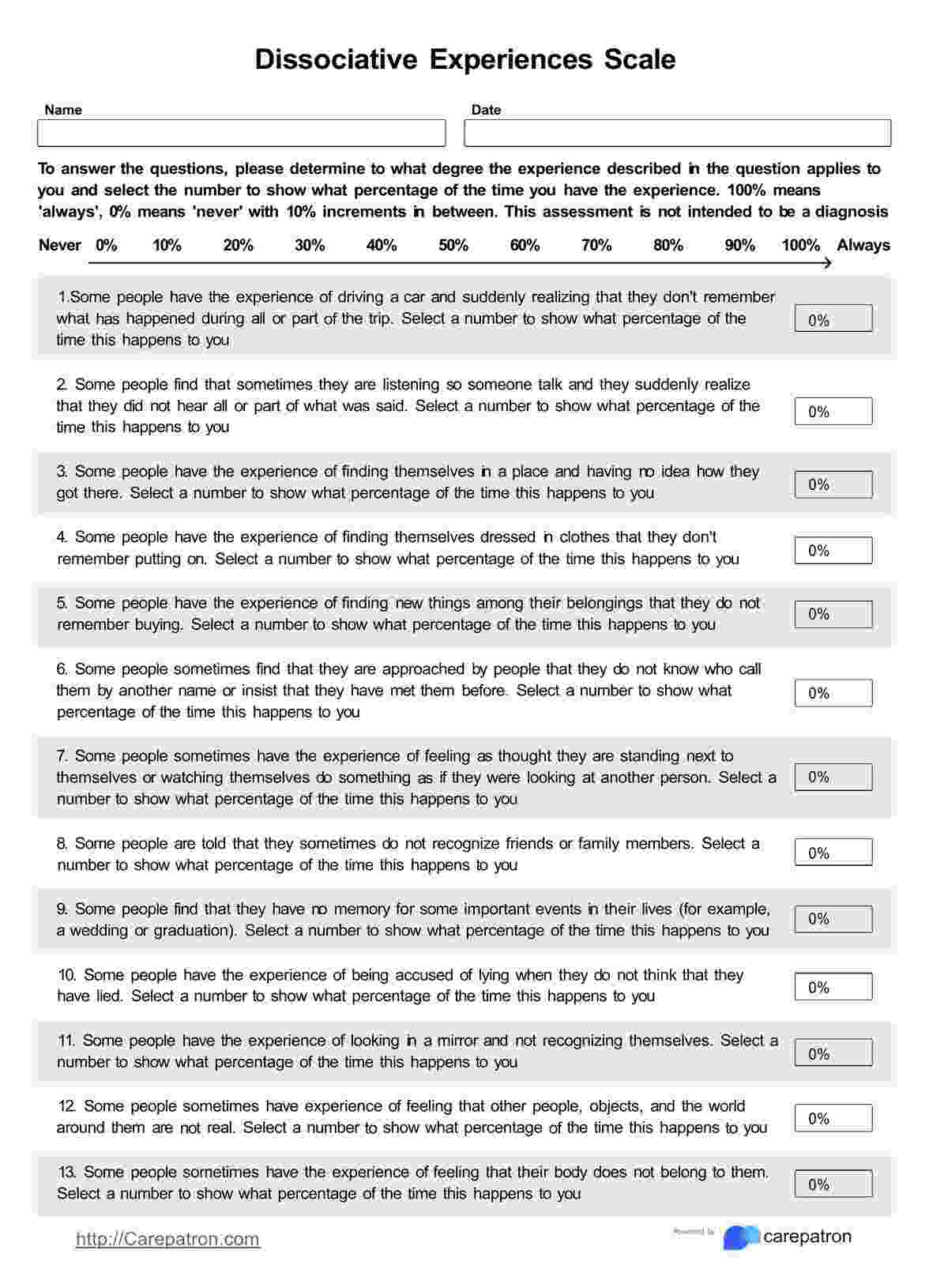Social Phobia Inventory
Get access to a free Social Phobia Inventory template and example. Use it to evaluate your client's social phobia.


What is the Social Phobia Inventory?
The Social Phobia Inventory (SPIN) is a new self-rating scale developed to assess the severity of social anxiety or social phobia in individuals. Although also assessing social anxiety, it differs from the SIAS and Liebowitz Social Anxiety Scale in its methods and application.
It was developed to help clinicians and researchers understand how social anxiety affects a person’s daily life and functioning. It can be used as part of a comprehensive examination of patients and help determine if a person should be diagnosed with generalized social anxiety disorder. Its solid psychometric properties support its significance in research purposes for social phobia subjects in behavioral sciences.
The SPIN is a self-rating scale that contains 17 items that address various situations and experiences commonly associated with social anxiety. Participants rate each item on a 5-point Likert scale, typically ranging from 0 (not at all) to 4 (extremely), based on what they experienced the past week. The items cover aspects such as fear of embarrassment or humiliation, avoidance of social situations, and anxiety-related physiological symptoms.
If you're looking for a useful treatment plan, feel free to watch this video:
Social Phobia Inventory Template
Social Phobia Inventory Example
How does it work?
Our free Social Phobia Inventory template allows you to easily and quickly assess your client's level of social phobia using 17 items. Here's how to use the template:
Step 1: Access the inventory
Use the link on this page to download the printable Social Phobia Inventory. You can also access it from the Carepatron app or our resources library.
Step 2: Explain how it works
Discuss the inventory with your client and explain what it is and how to use it. Make sure to answer any questions they may have before administering the tool.
Step 3: Client completes the inventory
Give your client enough time to complete the inventory. They should answer all the questions honestly and thoughtfully.
Step 4: Score the inventory
Once your client has answered all the questions, it's time to score the inventory. Assess their responses for each item and give a numerical score based on their answers.
Step 5: Interpret the results
When interpreting the score for social phobia, a higher score generally suggests a higher level of social anxiety. However, it's important to consider individual contexts and circumstances since scores can vary.
Step 6: Discuss the results
Have a chat with your client. Encourage them to open up about their feelings and experiences with social phobia and how the score reflects their struggles. This is a great chance to delve deeper into social anxiety issues, and it can be considered in assessing treatment response.
Social Phobia Inventory scoring and interpretation
The SPIN contains 17 items that address various situations and experiences commonly associated with social anxiety. Participants rate each item on a 5-point Likert scale, typically ranging from 0 (not at all) to 4 (extremely). The items cover aspects such as fear of embarrassment or humiliation, avoidance of social situations, and anxiety-related physical symptoms. A factorial analysis identified five factors within the SPIN, validating its structure.
To calculate the total score, add up the responses for all 17 items. The total score will range from 0 to 68. The interpretation of the SPIN total score is as follows:
- 0 to 19: Mild social anxiety - Individuals with scores in this range may experience some social anxiety, but it is not significantly impairing their daily life or functioning.
- 20 to 39: Moderate social anxiety - Scores in this range indicate a moderate level of social anxiety, which might interfere with certain social situations and daily activities.
- 40 to 68: Severe social anxiety - Scores in this range suggest a high level of social anxiety, which can significantly impact an individual’s ability to engage in social interactions and daily functioning.
Please note that the Social Phobia Inventory is intended for assessment purposes only and should not be used as a diagnostic tool for social anxiety disorder. Understanding that a single assessment cannot provide a definitive diagnosis is crucial. Instead, the SPIN serves as an indicator of the severity of social anxiety symptoms.
When would you use this template?
You can use our free printable Social Phobia Inventory template to assess your client's level of social phobia. Additionally, you can use this inventory to:
Track progress over time
You can use our free SPIN template to monitor your client's social anxiety levels over multiple assessments. This allows you to track the development of their symptoms and create a personalized treatment plan tailored to their needs.
Gather reliable data
This template can be used to collect accurate, reliable data points about your client's level of social phobia. This will enable you to provide more precise diagnostic information and develop a comprehensive treatment plan.
Identify areas for intervention
The Social Phobia Inventory can help pinpoint specific areas where your clients may need intervention, such as managing fear in social situations or addressing the fear of being judged.
Detect co-existing issues
Social phobia, or social anxiety disorder, frequently coexists with other mental health conditions. Thoroughly evaluating the extent of social anxiety using SPIN allows you to identify possible comorbidities.
Foster self-reflection
You can use this inventory to encourage your client to recognize and reflect on their own limitations and feelings. This can help them better understand themselves, ultimately leading to more successful treatment outcomes.
Commonly asked questions
The Social Phobia Inventory is suitable for clinical and non-clinical settings, catering to children, adolescents, adults, and older patients experiencing social phobia.
The inventory can be completed within 5 to 10 minutes.
You can use the Social Phobia Inventory at any stage of treatment or when a person is not receiving mental health services to assess their social anxiety levels.
A trained clinician administers the Social Phobia Inventory, which consists of 17 items assessing social phobia. Responses are compared to established norms for interpretation.


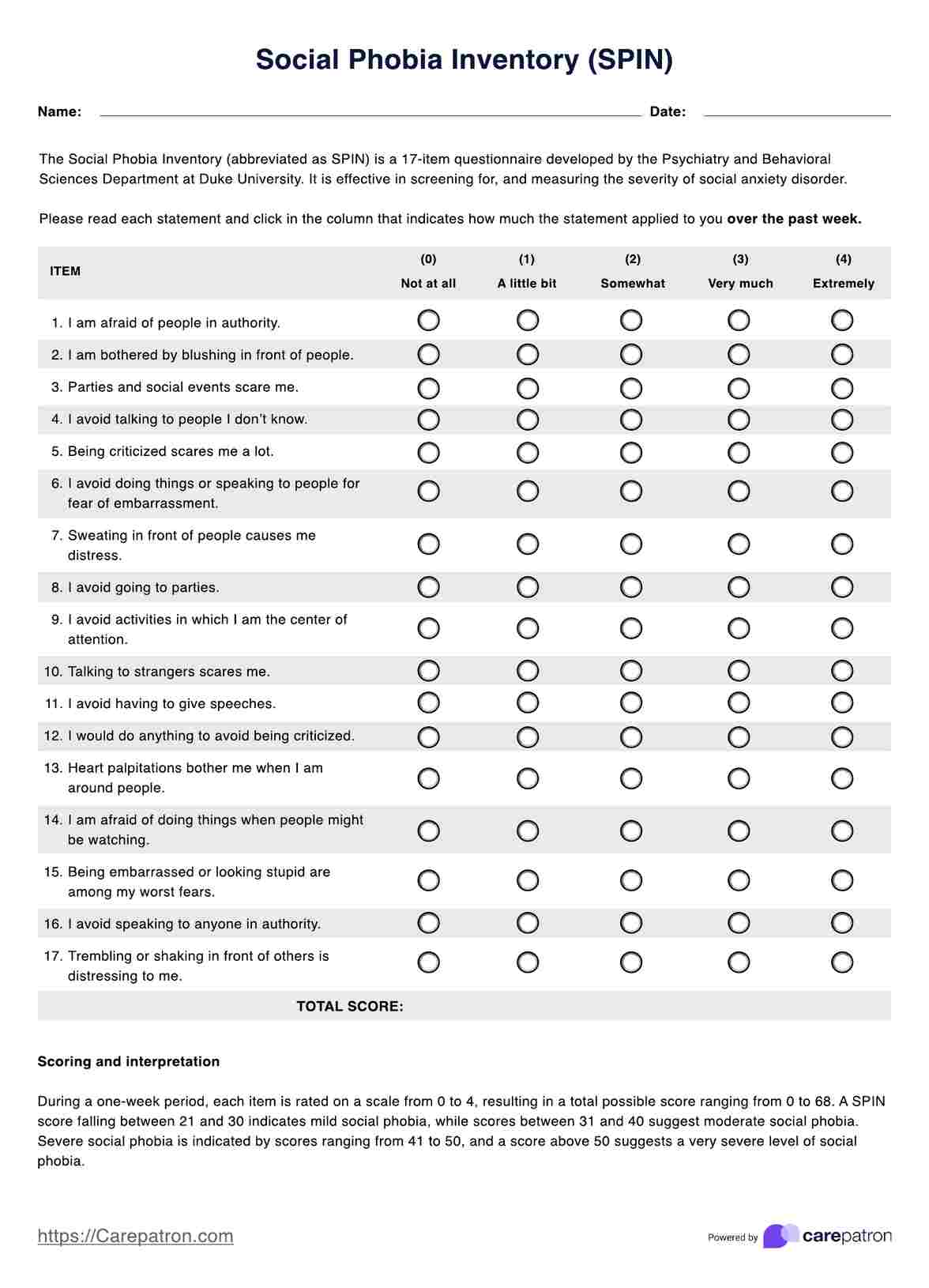
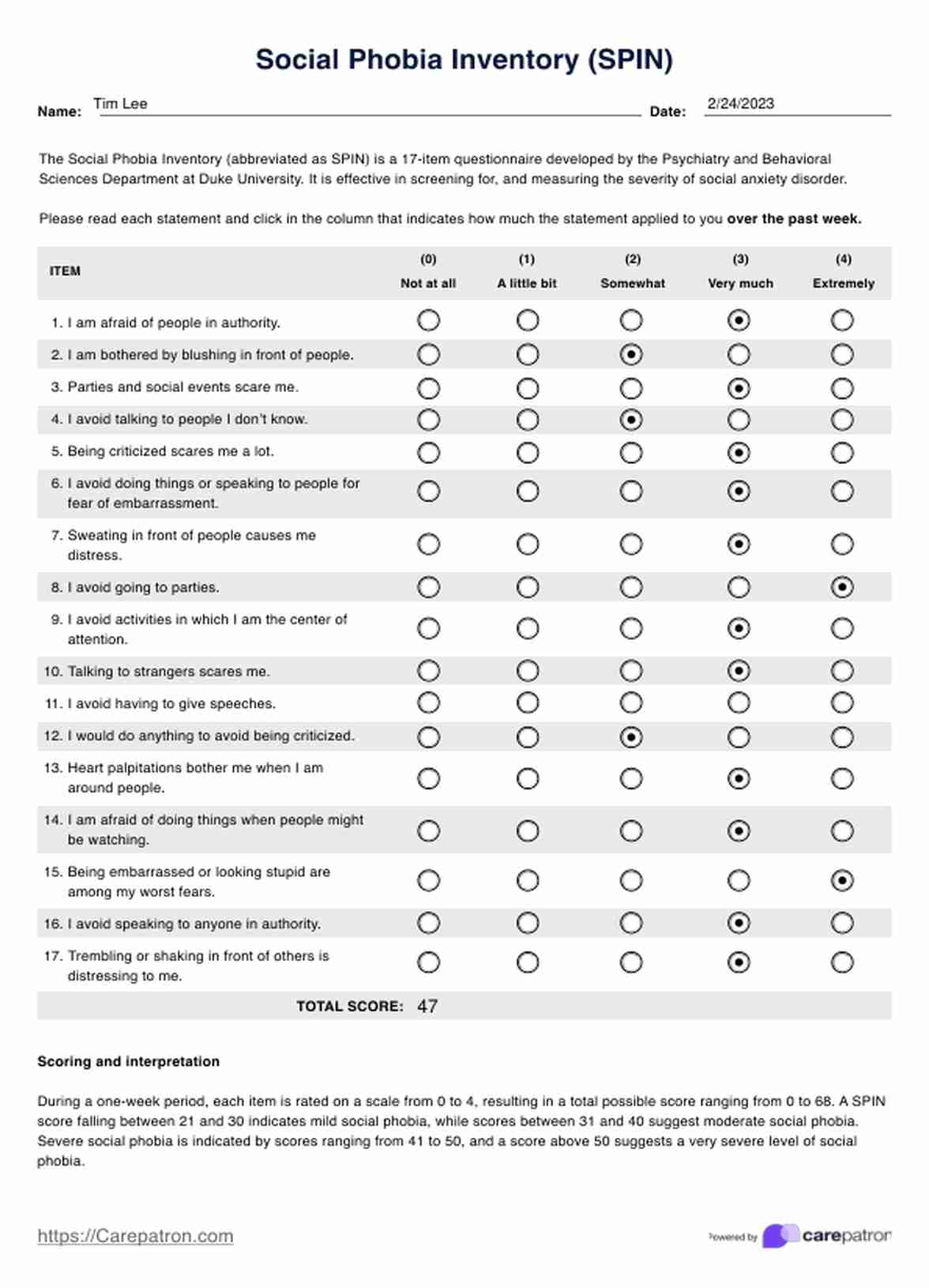

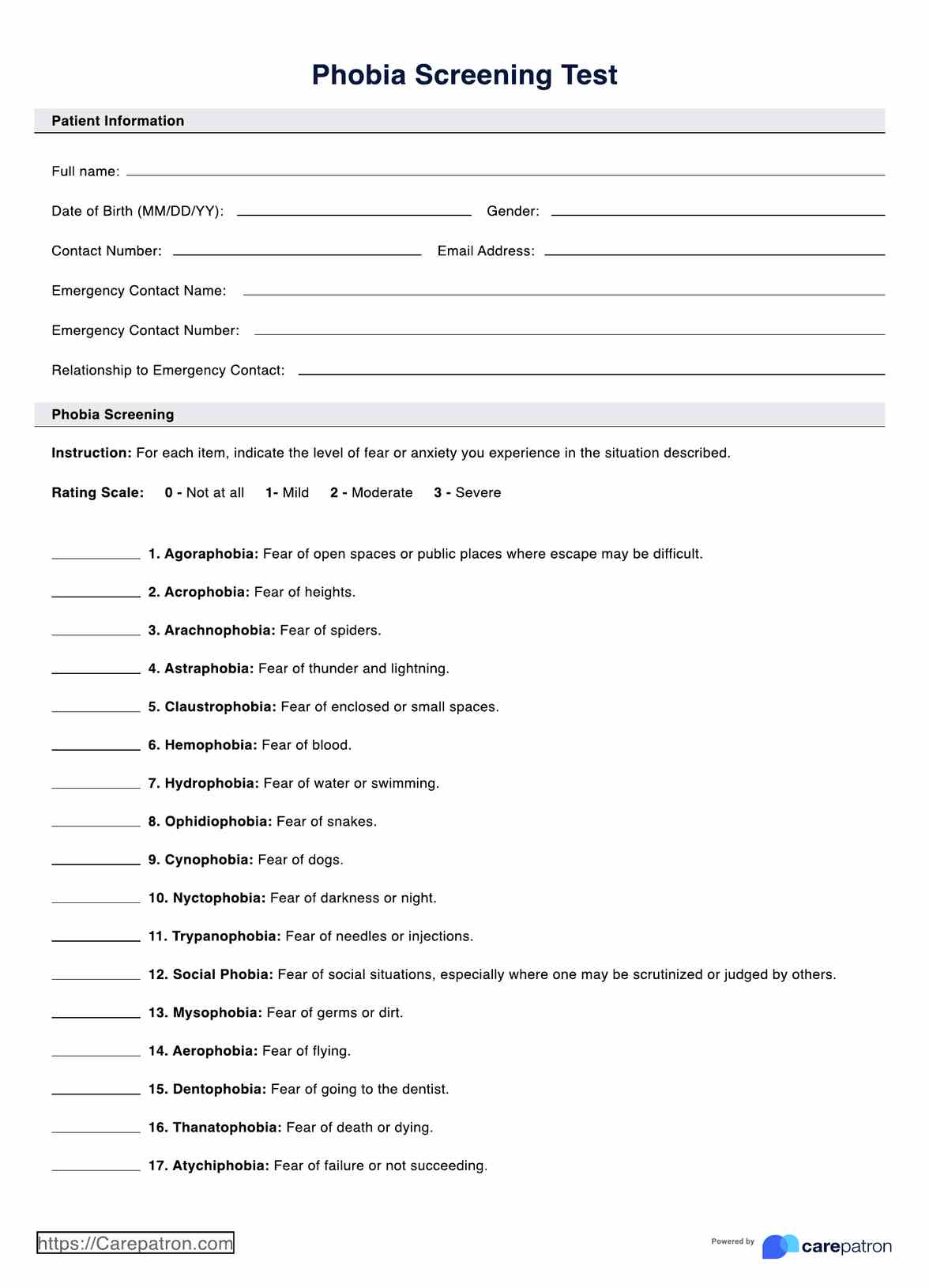
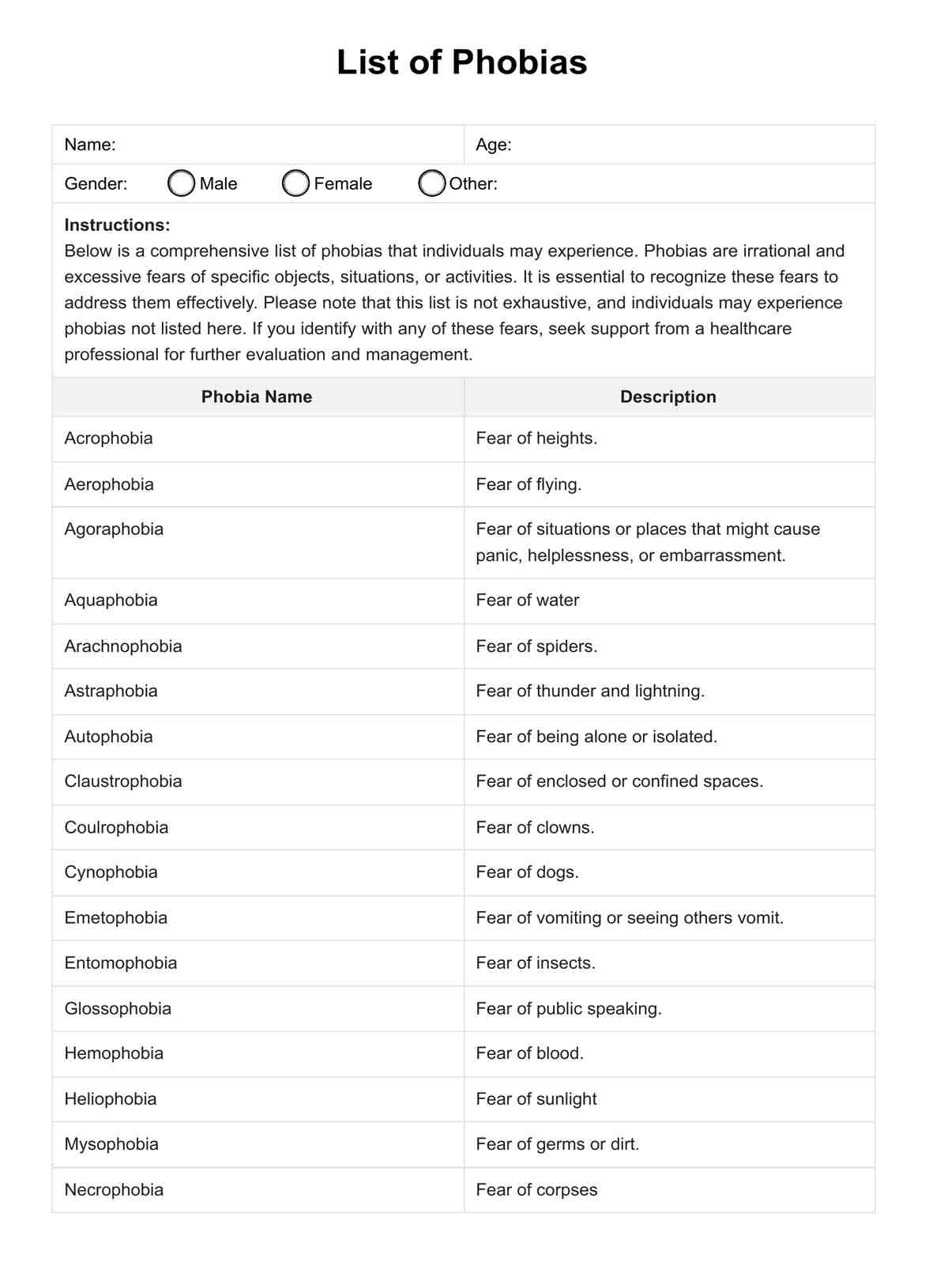














-template.jpg)



























































































